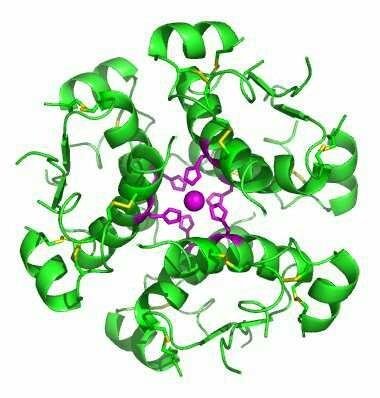In my previous post, Is your love for coffee possibly killing you or maybe it gives you a better chance of living?, I explained what coffee is and also mentioned the two major species in the world market. That is, Coffea arabica and Coffea canephora which constitute 60% and 48% of the world market respectively.
Also, I identified that coffee is one of the most consumed beverages in the world. Coffee contains Caffeine which is responsible for the stimulating effect it have. It also contains some other components like the phenolic compound, potassium and magnesium etc. Another important thing to note from my last post is that the caffeine content in a cup of coffee will be determined by the processing method and also the species.
In case you missed it or you've probably forgotten what it's all about you can click here to read the post. Today I'm going to be talking about another impact of drinking coffee on human health which is impact of drinking coffee on diabetes.

CC0 Creative Commons: pixabay
What is diabetes?
Diabetes is a disease that is characterized by a high level of blood sugar (that is, 126 mg/dl or higher; mg/dl = milligram per deciliter) over an extended period of time and it is caused by problems with the hormone insulin. That is, either the pancreas can no longer produce enough insulin or the body can no longer effectively utilize the insulin produced by the pancreas.
Although this disease is commonly referred to as just diabetes but to be more specific it is called Diabetes mellitus (DM) and it should not be confused with another type of group of diseases known as Diabetes insipidus (DI). Patients suffering from DI produces a large amount of dilute urine and experience increased thirst which is similar in DM but it has an unrelated mechanism to DM. Another distinction of DI from DM is that patient suffering from DM has increased sugar level and the urine also contain glucose.
The common symptoms of diabetes are frequent urination and increased rate of hunger and thirst. After a while, a patient suffering from diabetes may develop other symptoms such as itching of the skin, blurry vision, tiredness, weight loss, and heavy breathing. Chronic cases also predispose its victims to the risk of cardiovascular disease, kidney disease, and slow healing sores.
According to WHO, there are 347 million people in the world with diabetes. WHO also predicted that it will become the 7th leading cause of death in the year 2030. Also, the majority of people with diabetes in the world has type 2 diabetes.
Role of Insulin and types of diabetes
 Creative Commons Attribution 2.5 Generic:Wikipedia image
Creative Commons Attribution 2.5 Generic:Wikipedia image
Whenever you consume food, it will be broken down within your body into smaller particles which the body can utilize through the process called digestion. (I once made an interesting post on digestion) The end product of carbohydrate digestion is glucose which is requires by the cells as a source of energy. When there is too much glucose in the body, the pancreas releases the hormone insulin which sends information to the liver which in turn makes the calls absorb the excess glucose. Glucose is stored in our body as glycogen.
Glucagon works similarly to insulin but in a reverse process instead. When the glucose level of the blood is too low, the pancreas releases the hormone Glucagon. Glucagon sends information to the liver which makes the body release the stored sugar in form of Glucagon.
- Type 1 diabetes: This is the type of diabetes that occur when the pancreas can no longer produce enough insulin
- Type 2 diabetes: This is the type of diabetes that occurs when the body cannot effectively use the insulin that has been produced by the pancreas.
- Gestational diabetes: This type of diabetes occur in pregnant women who do not have a previous record of diabetes but suddenly have an increased blood sugar level.
Literature review
"Coffee Consumption and Risk of Type 2 Diabetes Mellitus among Middle-aged Finnish Men and Women"
This study was conducted by Jaakko Tuomilehto and his team. The objective of the study was to determine the relationship between coffee consumption and type 2 Diabetes mellitus among middle-aged Finnish Men and Women. Finland has the highest coffee consumption in the world refParticipants were gotten from surveys conducted in the years 1982, 1987, and 1992. All the participant for these 3 surveys were combined and the participants in the initial surveys were between the ages of 25 64 years. The final sample comprised of 6974 men and 7654 women between the ages of 35 64 years after people between the ages of 25 34 years were excluded because of the fewer cases of type 2 diabetes. Also, participants with incomplete data or history of stroke, coronary heart disease, or diabetes were excluded.
The result
The study had a mean follow-up of 12 years and 175,628 Person-years of follow up. (I explained Person-years in my previous post. For example, if 100 participants in this study were followed up for a year, they make 100 person-years. If the same number were followed up for two years, it will become 200 person-years.)
There were 381 incident case of type 2 diabetes. The hazard ratio of diabetes associated with daily consumption was calculated after adjustment for confounding factors.
-
Confounding factor is that factor that can affect but the dependent and independent variable. For example, in our topic of discussion, coffee consumption and diabetes smoking can be a confounding factor. Studies have shown that heavy coffee consumers tend to smoke and smoking may also increase the risk of diabetes.
- Hazard ratio (HR) is the ratio of a hazard to occur. If the hazard ratio is 2, that means the risk for the event to happen is twice. If it is 1, it means there is no difference and if it is lesser than 1 it means it is less likely to occur.
In conclusion
The authors found out that drinking coffee has an inverse association with the risk of type 2 diabetes. In other words, the more coffee you consume means the less likelihood of type 2 diabetes but the reason for this association remains unclear.A similar result to this study was also reported in other studies. In this study in a population of Dutch men and women, the authors reported a lowered risk of type 2 diabetes is associated with coffee consumption. In another article, the authors reported to have found similar result among Japanese cross-sectional study 1916 men and 2704 women and that coffee has a preventive effect against diabetes.
Personal Notes From Me
 CC0 Creative Commons: pixabay
CC0 Creative Commons: pixabay
It is a common knowledge that prevention is always cheaper and better than cure. Diabetes, like many other diseases that affect human, can be prevented or at least delayed by maintaining a healthy lifestyle.
Physical exercise and activities help in keeping the body in good condition. It also helps in maintaining a healthy body weight which also comes with a good look and also prevents obesity which exposes victims to greater risk of diabetes.
Avoid fast foods and junks as much as you can and go for the healthy meal. Fruits and vegetables are cheaper and healthier. Excess use of tobacco and alcohol can also expose one to the risk of the disease.
Hello! I find your post valuable for the wafrica community! Thanks for the great post! We encourage and support quality contents and projects from the West African region.
Do you have a suggestion, concern or want to appear as a guest author on WAfrica, join our discord server and discuss with a member of our curation team.
Don't forget to join us every Sunday by 20:30GMT for our Sunday WAFRO party on our discord channel. Thank you.
Downvoting a post can decrease pending rewards and make it less visible. Common reasons:
Submit
Congratulations! Your post has been selected as a daily Steemit truffle! It is listed on rank 13 of all contributions awarded today. You can find the TOP DAILY TRUFFLE PICKS HERE.
I upvoted your contribution because to my mind your post is at least 7 SBD worth and should receive 174 votes. It's now up to the lovely Steemit community to make this come true.
I am
TrufflePig, an Artificial Intelligence Bot that helps minnows and content curators using Machine Learning. If you are curious how I select content, you can find an explanation here!Have a nice day and sincerely yours,

TrufflePigDownvoting a post can decrease pending rewards and make it less visible. Common reasons:
Submit
I only drink coffee every once in a while. So I guess I'm free of whatever negative effects it may have on the health :)
Downvoting a post can decrease pending rewards and make it less visible. Common reasons:
Submit
Well, you are free but the positive effects outweighs the negative ones.
Downvoting a post can decrease pending rewards and make it less visible. Common reasons:
Submit
This post has been voted on by the steemstem curation team and voting trail.
There is more to SteemSTEM than just writing posts, check here for some more tips on being a community member. You can also join our discord here to get to know the rest of the community!
Downvoting a post can decrease pending rewards and make it less visible. Common reasons:
Submit
I am a little curious to know, that which type of diabetes is more dangerous. According to me, diabetes 2 will be the least dangerous, but what about type 1 and Gestational diabetes.
Downvoting a post can decrease pending rewards and make it less visible. Common reasons:
Submit
I am not sure I will be able to debate which is worst because they have their different way the affect people. If we are to go by the number, type 2 kills more people than type 1. Also in type 1, it occurs more sudden and mostly in younger people who may not be overweight. Patient who also suffer gestational diabetes are also likely to develop type 2 diabetes later in their life.
An author wrote this here "I think the worst type of diabetes is the type you have"
Posted using Partiko Android
Downvoting a post can decrease pending rewards and make it less visible. Common reasons:
Submit
Wow! There are actually more than one type of diabetes? (Diabetes mellitus and insipidus). I've learnt this one. We actually learn everyday. Thanks for sharing
Downvoting a post can decrease pending rewards and make it less visible. Common reasons:
Submit
Thanks Samminator for coming around. What we learn no one can take it away
Posted using Partiko Android
Downvoting a post can decrease pending rewards and make it less visible. Common reasons:
Submit